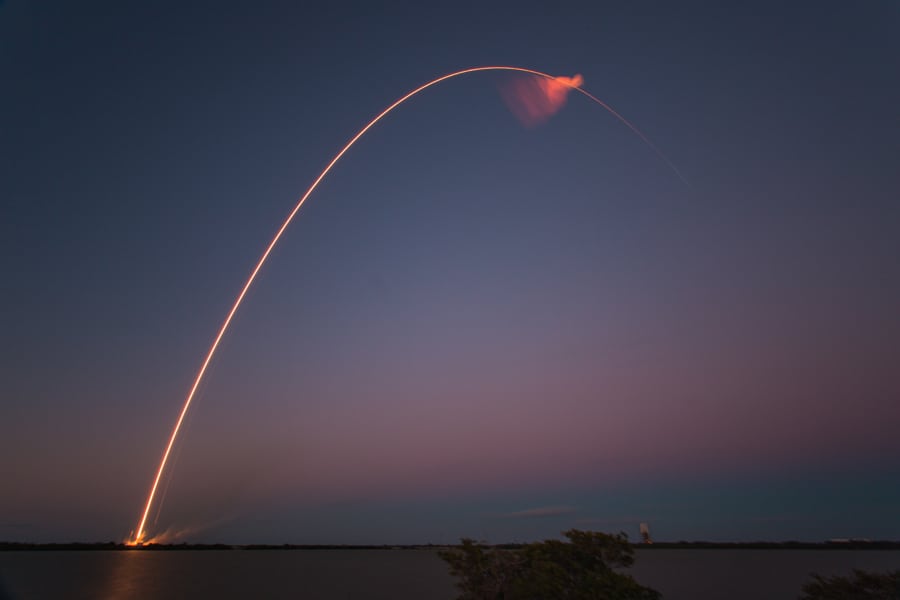
The Falcon9 rocket carrying the SES9 satellite, launched by SpaceX on March 4, 2016, from Cape Canaveral Air Force Station. Photo courtesy of NASA
Intelsat is in the process of checking out an advanced, high-performance satellite intended in part to support Global Eagle Entertainment’s global C- and Ku-band in-flight connectivity services following the space bird’s Wednesday launch.
Intelsat 35e was launched to a geostationary transfer orbit by a SpaceX Falcon 9 booster from Kennedy Space Center’s Launch Complex 39A in Florida at 7:38 p.m. local time July 5. After a successful checkout of the satellite systems and payloads, Intelsat plans to position the spacecraft at the Equator at 325.5 East Longitude, roughly north of Natal on Brazil’s easternmost Atlantic coast. From there, it would cover the Americas, the Caribbean, Europe and Africa.
Built by Boeing and equipped with an advanced digital payload, the spacecraft is the fourth of Intelsat’s EpicNG High-Throughput Satellites designed for high-performance services in C- and Ku-band for wireless infrastructure, mobility, broadband, government and media customers.
Intelsat last October signed an expanded, multi-year contract with Global Eagle Entertainment for global C- and Ku-band services using 10 satellites, including two new EpicNG birds. Intelsat 35e is the second of those new satellites.
This article includes contributions from sister publication Via Satellite.